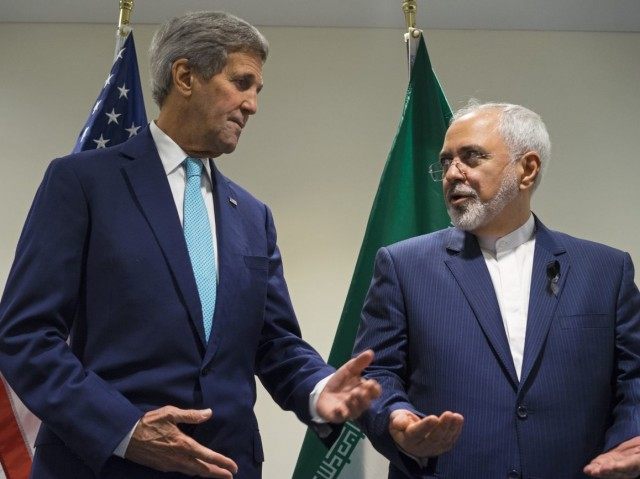Recently released satellite images of Iran’s top-secret military complex suggest that the Islamic Republic was engaged in efforts to hide its atomic program-related work from the past while nuclear deal negotiations were ongoing.
The satellite photos of Iran’s top-secret Parchin military site, located an estimated 20 miles southeast of Tehran, were obtained by private intelligence firm Stratfor.
Stratfor analyst Sim Tack spoke to the Daily Beast about the series of images taken from space.
“We’re not saying they’re cheating on the nuclear deal,” he said, adding, “The images show Iran was going through the motions to hide what it’s done before, and it is still … developing facilities that the IAEA [International Atomic Energy Agency] may or may not have access to.”
Tack reportedly indicated that “the progression of satellite images tracking construction at Parchin from 2012 to 2015 show how Iran’s leaders apparently worked to keep regime hardliners happy by moving forward with weapons programs, even as the leadership worked to erase signs of an illegal nuclear weapons program.”
He described the construction of a tunnel entrance to the military complex as new information. Stratfor says the images reveal that Iran is digging a tunnel into a heavily guarded mountain complex inside the Parchin facility.
“A 2014 image Stratfor did not release showed construction equipment outside tunnel entrance,” reports the Daily Beast, adding, “The mysterious subterranean complex could be part of Iran’s ballistic missile program that triggered new U.S. sanctions in January, even as the nuclear sanctions were being lifted.”
“They were still going forward with that construction during the talks,” said Tack.
Stratfor revealed that its partner AllSource Analysis provided the satellite images of the Parchin facility, which were taken in July 2010 and January 2016.
“Iran has continued to develop certain military technologies, including ballistic missiles, that could someday be used to support nuclear capabilities,” notes the intelligence firm. “Meanwhile, it has kept its activities at several military installations around the country cloaked in secrecy.”
The images make clear that the Shiite powerhouse began engaging in efforts to scrub the military complex clean in 2012, as negotiations with the West began to bear fruit, notes Stratfor.
“It removed layers of soil and foliage that could have contained evidence of its previous activities well before inspectors from the International Atomic Energy Agency arrived in September 2015, and covered large areas with concrete,” points out the firm. “Tehran also insisted that Iranian personnel, rather than IAEA experts, collect the test samples required for the inspection.”
“However, the IAEA insists that this process was subject to rigid oversight, and the organization found no incriminating evidence against Iran during its visit to Parchin, though this was likely in part due to the recent renovations and the lack of equipment left in the high explosives test building,” it adds.
Meanwhile, Tehran continued to develop the top-secret military site’s underground facilities, to which IAEA observers were denied access during their visit.
“While it is true that Iran has relied heavily on underground facilities like those at Parchin to develop conventional weapons, the country’s hidden military sites continue to cast doubt on Tehran’s long-term commitment to the nuclear accord,” reports Stratfor.
Iran has consistently insisted that the Parchin military complex is not strictly a nuclear facility, claiming that no work linked to nuclear weapons has been carried out there.
The military site was a source of controversy during the nuclear talks.
The Daily Beast questions whether or not the “furious construction” at the Parchin military complex was aimed at hiding nuclear weapons activities.
Amid nuclear deal talks, Tehran “was apparently working to hide its atomic work of the past and hedge its bets for the future,” reports the news outlet.
“The satellite images appear to show new paving around the building that was alleged to be a test site for high-energy explosive charges used to detonate a nuclear weapon,” it adds. “Comparing satellite images from 2010 to one taken this year, [Stratfor’s] Tack points out that the area has been paved, and plants and trees surrounding it removed and the soil scraped—all steps one would take to hide the radioactive fallout of nuclear weapons testing.”
As part of the final steps up to the adoption of the historic nuclear deal reached in July 2015 between Iran and five nuclear powers led by the United States, the IAEA deployed a team to inspect the Parchin site last fall.
The IAEA and the Obama administration declined to comment on the new images, acknowledges the Daily Beast, adding that Iran’s United Nations Mission did not respond to requests for comment.
Like in the past, Iran denies construction at its Parchin military complex.

COMMENTS
Please let us know if you're having issues with commenting.